Nokia 2011 Annual Report Download - page 50
Download and view the complete annual report
Please find page 50 of the 2011 Nokia annual report below. You can navigate through the pages in the report by either clicking on the pages listed below, or by using the keyword search tool below to find specific information within the annual report.-
 1
1 -
 2
2 -
 3
3 -
 4
4 -
 5
5 -
 6
6 -
 7
7 -
 8
8 -
 9
9 -
 10
10 -
 11
11 -
 12
12 -
 13
13 -
 14
14 -
 15
15 -
 16
16 -
 17
17 -
 18
18 -
 19
19 -
 20
20 -
 21
21 -
 22
22 -
 23
23 -
 24
24 -
 25
25 -
 26
26 -
 27
27 -
 28
28 -
 29
29 -
 30
30 -
 31
31 -
 32
32 -
 33
33 -
 34
34 -
 35
35 -
 36
36 -
 37
37 -
 38
38 -
 39
39 -
 40
40 -
 41
41 -
 42
42 -
 43
43 -
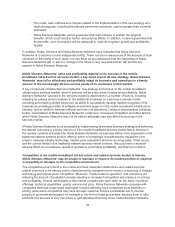 44
44 -
 45
45 -
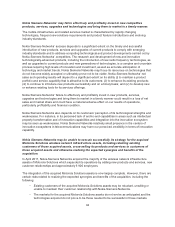 46
46 -
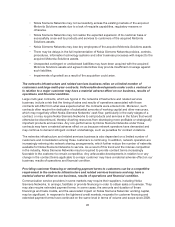 47
47 -
 48
48 -
 49
49 -
 50
50 -
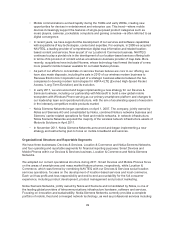 51
51 -
 52
52 -
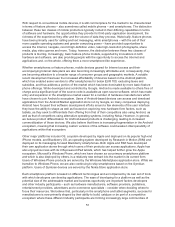 53
53 -
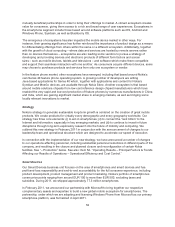 54
54 -
 55
55 -
 56
56 -
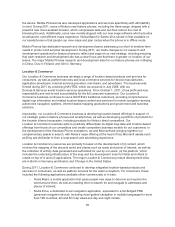 57
57 -
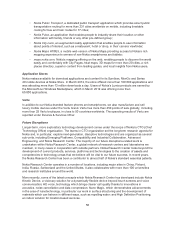 58
58 -
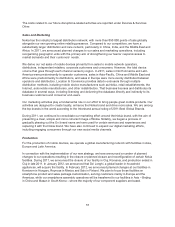 59
59 -
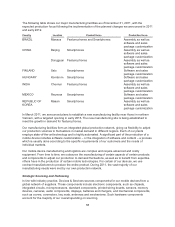 60
60 -
 61
61 -
 62
62 -
 63
63 -
 64
64 -
 65
65 -
 66
66 -
 67
67 -
 68
68 -
 69
69 -
 70
70 -
 71
71 -
 72
72 -
 73
73 -
 74
74 -
 75
75 -
 76
76 -
 77
77 -
 78
78 -
 79
79 -
 80
80 -
 81
81 -
 82
82 -
 83
83 -
 84
84 -
 85
85 -
 86
86 -
 87
87 -
 88
88 -
 89
89 -
 90
90 -
 91
91 -
 92
92 -
 93
93 -
 94
94 -
 95
95 -
 96
96 -
 97
97 -
 98
98 -
 99
99 -
 100
100 -
 101
101 -
 102
102 -
 103
103 -
 104
104 -
 105
105 -
 106
106 -
 107
107 -
 108
108 -
 109
109 -
 110
110 -
 111
111 -
 112
112 -
 113
113 -
 114
114 -
 115
115 -
 116
116 -
 117
117 -
 118
118 -
 119
119 -
 120
120 -
 121
121 -
 122
122 -
 123
123 -
 124
124 -
 125
125 -
 126
126 -
 127
127 -
 128
128 -
 129
129 -
 130
130 -
 131
131 -
 132
132 -
 133
133 -
 134
134 -
 135
135 -
 136
136 -
 137
137 -
 138
138 -
 139
139 -
 140
140 -
 141
141 -
 142
142 -
 143
143 -
 144
144 -
 145
145 -
 146
146 -
 147
147 -
 148
148 -
 149
149 -
 150
150 -
 151
151 -
 152
152 -
 153
153 -
 154
154 -
 155
155 -
 156
156 -
 157
157 -
 158
158 -
 159
159 -
 160
160 -
 161
161 -
 162
162 -
 163
163 -
 164
164 -
 165
165 -
 166
166 -
 167
167 -
 168
168 -
 169
169 -
 170
170 -
 171
171 -
 172
172 -
 173
173 -
 174
174 -
 175
175 -
 176
176 -
 177
177 -
 178
178 -
 179
179 -
 180
180 -
 181
181 -
 182
182 -
 183
183 -
 184
184 -
 185
185 -
 186
186 -
 187
187 -
 188
188 -
 189
189 -
 190
190 -
 191
191 -
 192
192 -
 193
193 -
 194
194 -
 195
195 -
 196
196 -
 197
197 -
 198
198 -
 199
199 -
 200
200 -
 201
201 -
 202
202 -
 203
203 -
 204
204 -
 205
205 -
 206
206 -
 207
207 -
 208
208 -
 209
209 -
 210
210 -
 211
211 -
 212
212 -
 213
213 -
 214
214 -
 215
215 -
 216
216 -
 217
217 -
 218
218 -
 219
219 -
 220
220 -
 221
221 -
 222
222 -
 223
223 -
 224
224 -
 225
225 -
 226
226 -
 227
227 -
 228
228 -
 229
229 -
 230
230 -
 231
231 -
 232
232 -
 233
233 -
 234
234 -
 235
235 -
 236
236 -
 237
237 -
 238
238 -
 239
239 -
 240
240 -
 241
241 -
 242
242 -
 243
243 -
 244
244 -
 245
245 -
 246
246 -
 247
247 -
 248
248 -
 249
249 -
 250
250 -
 251
251 -
 252
252 -
 253
253 -
 254
254 -
 255
255 -
 256
256 -
 257
257 -
 258
258 -
 259
259 -
 260
260 -
 261
261 -
 262
262 -
 263
263 -
 264
264 -
 265
265 -
 266
266 -
 267
267 -
 268
268 -
 269
269 -
 270
270 -
 271
271 -
 272
272 -
 273
273 -
 274
274 -
 275
275 -
 276
276 -
 277
277 -
 278
278 -
 279
279 -
 280
280 -
 281
281 -
 282
282 -
 283
283 -
 284
284 -
 285
285 -
 286
286 -
 287
287 -
 288
288 -
 289
289 -
 290
290 -
 291
291 -
 292
292 -
 293
293 -
 294
294 -
 295
295 -
 296
296
 |
 |
technological and design innovations have made its brand one of the most recognized in the world.
Nokia Siemens Networks, jointly owned by Nokia and Siemens, is one of the leading global providers
of telecommunications infrastructure hardware, software and services.
For 2011, our net sales were EUR 38.7 billion (USD 50.2 billion), and we had an operating loss of
EUR 1.1 billion (USD 1.4 billion). At the end of 2011, we employed 130 050 people, of which 73 686
were employed by Nokia Siemens Networks.
We operate a global network of production facilities for mobile products and network infrastructure in
eight countries, as well as a global network of sales, customer service and other operational units. For
mobile products, we have sales in more than 160 countries. Nokia has made significant investments
into research and development and has been one of the leading innovators in the industry over the
past two decades. For mobile products, we operate several major research and development and
software development facilities, with key sites in China, Finland, Germany and the United States.
History
During our 147 year history, Nokia has evolved from its origins in the paper industry to become a world
leader in mobile communications. Today, Nokia brings mobile products and services to more than one
billion people from virtually every demographic segment of the population.
The key milestones in our history are as follows:
• In 1967, we took our current form as Nokia Corporation under the laws of the Republic of
Finland. This was the result of the merger of three Finnish companies: Nokia AB, a wood-pulp
mill founded in 1865; Finnish Rubber Works Ltd, a manufacturer of rubber boots, tires and
other rubber products founded in 1898; and Finnish Cable Works Ltd, a manufacturer of
telephone and power cables founded in 1912.
• We entered the telecommunications equipment market in 1960 when an electronics
department was established at Finnish Cable Works to concentrate on the production of
radio-transmission equipment.
• Regulatory and technological reforms have played a role in our success. Deregulation of the
European telecommunications industries since the late 1980s stimulated competition and
boosted customer demand.
• In 1982, we introduced the first fully-digital local telephone exchange in Europe, and in that
same year we introduced the world’s first car phone for the Nordic Mobile Telephone analog
standard.
• The technological breakthrough of GSM, which made more efficient use of frequencies and
had greater capacity in addition to high-quality sound, was followed by the European
resolution in 1987 to adopt GSM as the European digital standard by July 1, 1991.
• The first GSM call was made with a Nokia phone over the Nokia-built network of a Finnish
operator called Radiolinja in 1991, and in the same year Nokia won contracts to supply GSM
networks in other European countries.
• In the early 1990s, we made a strategic decision to make telecommunications our core
business, with the goal of establishing leadership in every major global market. Basic industry
and non-telecommunications operations—including paper, personal computer, rubber,
footwear, chemicals, power plant, cable, aluminum and television businesses—were divested
during the period from 1989 to 1996.
48
